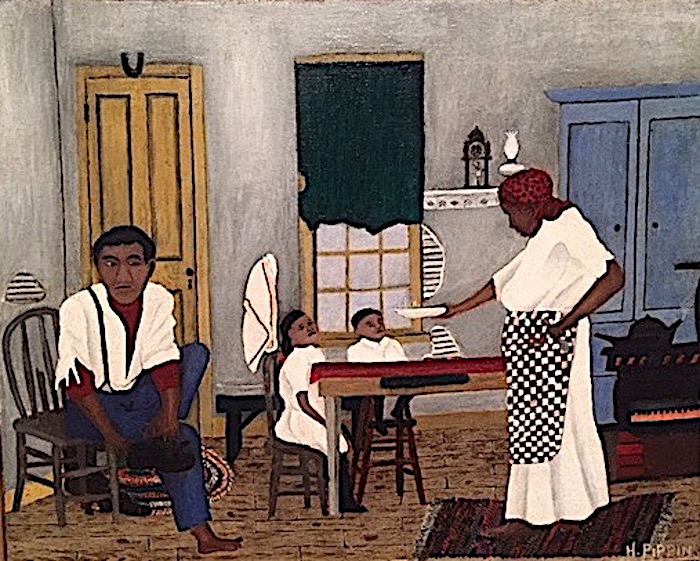IN THIS ISSUE
New
York’s
Open For Indoor Dining:
Royal 35 Is A Restaurant For This
Moment
LOVE AND PIZZA
CHAPTER TWENTY-NINE
By John Mariani
NOTES FROM THE WINE CELLAR
GAME TIME WINES
By John Mariani
❖❖❖
New York’s Open
For Indoor Dining:
Royal 35 Is A Restaurant For This
Moment
1 East 35th Street
212-804-7276
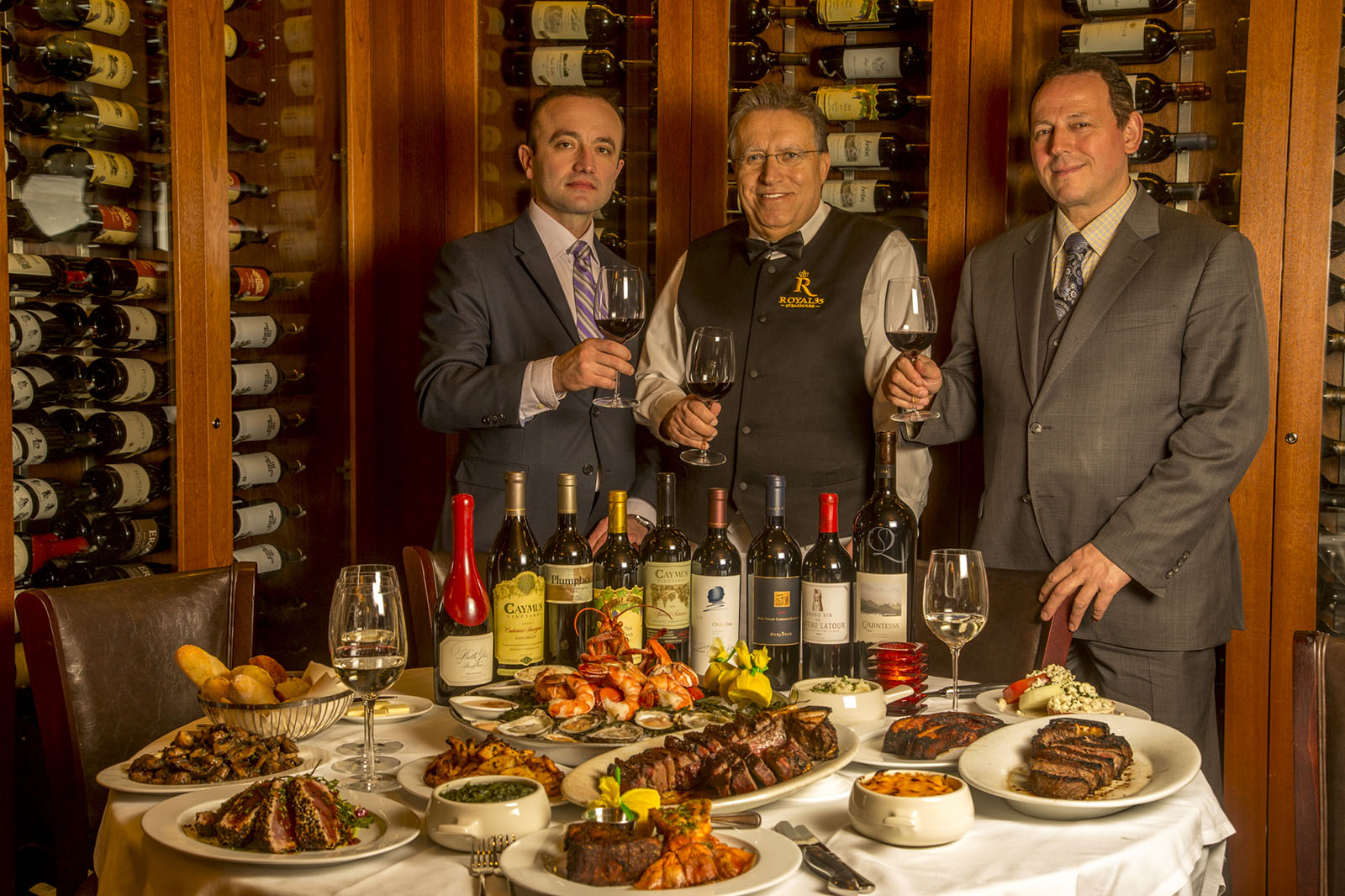
When the
coronavirus hit New York, it threatened to
put thousands of small businesses out of
commission, not least restaurants, whose
operating costs make for a very slim
profit margin even in the best of times.
Chefs, line cooks, dishwashers,
bartenders, wine directors, waiters and
busboys—most making low to moderate
wages—were thrown into a financial hole
immediately, with little hope things would
return to normal. Suppliers of food, wine
and laundry lost their clients overnight.
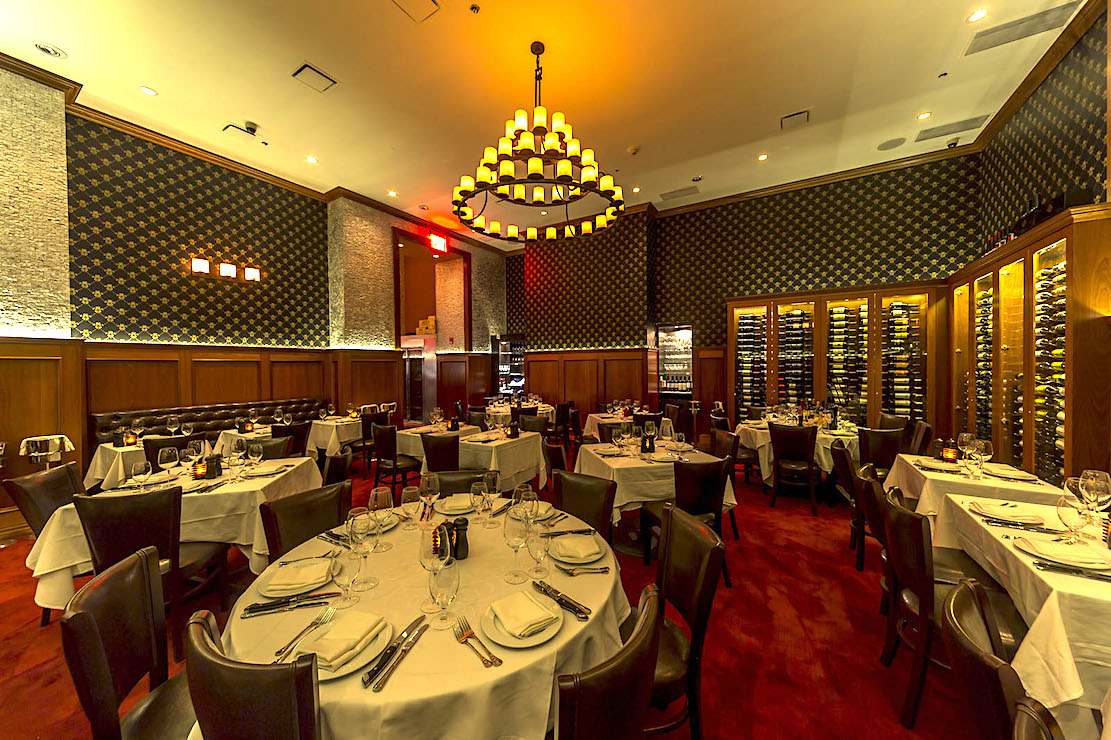 Back
in the spring I predicted that, despite all
the doom and gloom about the restaurant
industry never recovering, in fact, it will
do so and thrive again, albeit in different
ways. The first inklings of the industry’s
re-emergence came when New York’s state and
city governments allowed restaurants to
serve meals outside, loosening long
restrictive rules about sidewalk permits and
even allowing restaurants to spill onto the
streets. It was a whole new world for most
restaurateurs, few of which had ever thought
of outdoor dining, and a public hungry for
eating outside their homes responded with
immediate support. At this point, with cold
weather coming on, some restaurateurs are
thinking of keeping outdoor dining areas
sealed within transparent walls.
Back
in the spring I predicted that, despite all
the doom and gloom about the restaurant
industry never recovering, in fact, it will
do so and thrive again, albeit in different
ways. The first inklings of the industry’s
re-emergence came when New York’s state and
city governments allowed restaurants to
serve meals outside, loosening long
restrictive rules about sidewalk permits and
even allowing restaurants to spill onto the
streets. It was a whole new world for most
restaurateurs, few of which had ever thought
of outdoor dining, and a public hungry for
eating outside their homes responded with
immediate support. At this point, with cold
weather coming on, some restaurateurs are
thinking of keeping outdoor dining areas
sealed within transparent walls.
Then, on September 30, restaurants
were again allowed to offer indoor seating,
albeit with restrictions of social
distancing and a maximum of 25% occupancy.
Prior to that, many owners believed it would
be impossible even to break even within
those restrictions, but many who doubted
have in fact rushed to re-open, not least Le
Bernardin, the illustrious and very grand
French seafood restaurant in midtown whose
owners, Maguy LeCoze and Eric Ripert, had
previously said they might not open again
until 2021. But they have, and already
reservations are difficult to come by.
If any restaurant can signify the
tenacity and dedication of New York’s mighty
dining segment it might well be Royal 35,
not only because it is a steakhouse of a
kind that New York set the template for
decades ago, but because it is very much
part of the American Dream pursued by
immigrants, in this case a partnership of
steakhouse veterans Alfred Cetaj, Adam
Sinanaj, from years at his brother’s Ben
& Jack’s; and Sherif Nezaj, also head
bartender. Alfred and Sherif are from
Albania, Adam from next-door Montenegro.
Among many other eastern Europeans
who had that dream, these men had come up
through the rough-and-tumble ranks of the
New York restaurant world, where cash is
king, unions are a huge factor, a finicky
public can be fickle and consistency of
product and service is critical to success
at the beginning but does not guarantee
longevity.
Alfred’s American Dream was based on
all the usual factors—primarily a better
life for himself and his family—at a time
when refugees from Kosovo were pouring
across the border into Albania, whose own
government was topsy-turvy. He arrived in
New York in 1998 and started working his way
up through Italian restaurants like Taormina
and Tre Scalini, took a management course at
a culinary school and moved into jobs in the
steakhouse sector, including Michael
Jordan’s in Grand Central Terminal. At the
moment Covid hit, business at Royal 35 was
very  solid,
and when it did hit, Alfred believed it
would be temporary, “but it took much longer
than we thought,” he says. “We knew it would
come back but were hit hard. We got some
government money through the Paycheck
Protection Program, but the main thing is
that our landlord worked with us to
negotiate a good deal. Without that we could
never re-open.”
solid,
and when it did hit, Alfred believed it
would be temporary, “but it took much longer
than we thought,” he says. “We knew it would
come back but were hit hard. We got some
government money through the Paycheck
Protection Program, but the main thing is
that our landlord worked with us to
negotiate a good deal. Without that we could
never re-open.”
Three years ago, the men took over the large
space of what had been a series of
forgettable restaurants and added a walk-in
meat locker that you pass on the way to the
large dining room. In that locker hang 2,500
pounds of beef, aging for 35 days under
ideal conditions to produce the wine-dark,
dry-aged compression of the meat to
intensify its flavor, which makes an
enormous difference in taste. Many
steakhouses claim to serve dry-aged
beef—easily belied by its color
and bland flavor—but at Royal 35,
the proof is in the window.
The dining room is not of high
design—more Victorian than contemporary— but
very comfortable, and even 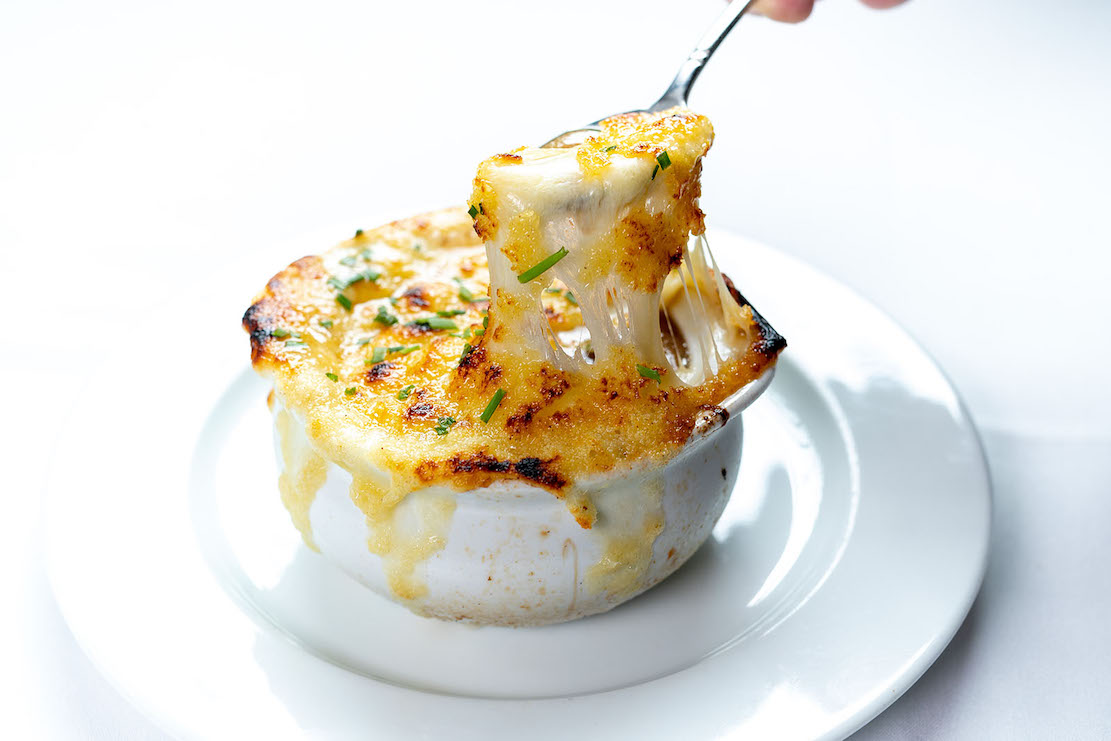 before
the Covid restrictions were put in place,
space between tables was very generous. The
bar was a good place for a good drink prior
to or after a game at Madison Square Garden,
three blocks away, or after visiting the
Empire State Building around the corner, and
the hospitality had none of that steakhouse
braggadocio found elsewhere around town.
Even behind their sanitary masks, the staff
manifests its genuine joy in seeing you walk
through the door.
before
the Covid restrictions were put in place,
space between tables was very generous. The
bar was a good place for a good drink prior
to or after a game at Madison Square Garden,
three blocks away, or after visiting the
Empire State Building around the corner, and
the hospitality had none of that steakhouse
braggadocio found elsewhere around town.
Even behind their sanitary masks, the staff
manifests its genuine joy in seeing you walk
through the door.
The menu is almost as lengthy as before, and
it’s straightforward steakhouse fare; prices
have not changed since spring. You get more
than ample bread and butter on the table,
and the wine list is judiciously chosen. If
you have a table of two to four, go for the
seafood tower (market price), which comes to
the table billowing with dry ice vapors,
groaning on tiers of shellfish, including
true lump crabmeat, beefy portions of
lobster and shrimp, mussels, oysters and
clams, served with appropriate sauces and,
in another show of largess, an abundance of
fat Sicilian lemons cut and topped with
netting.
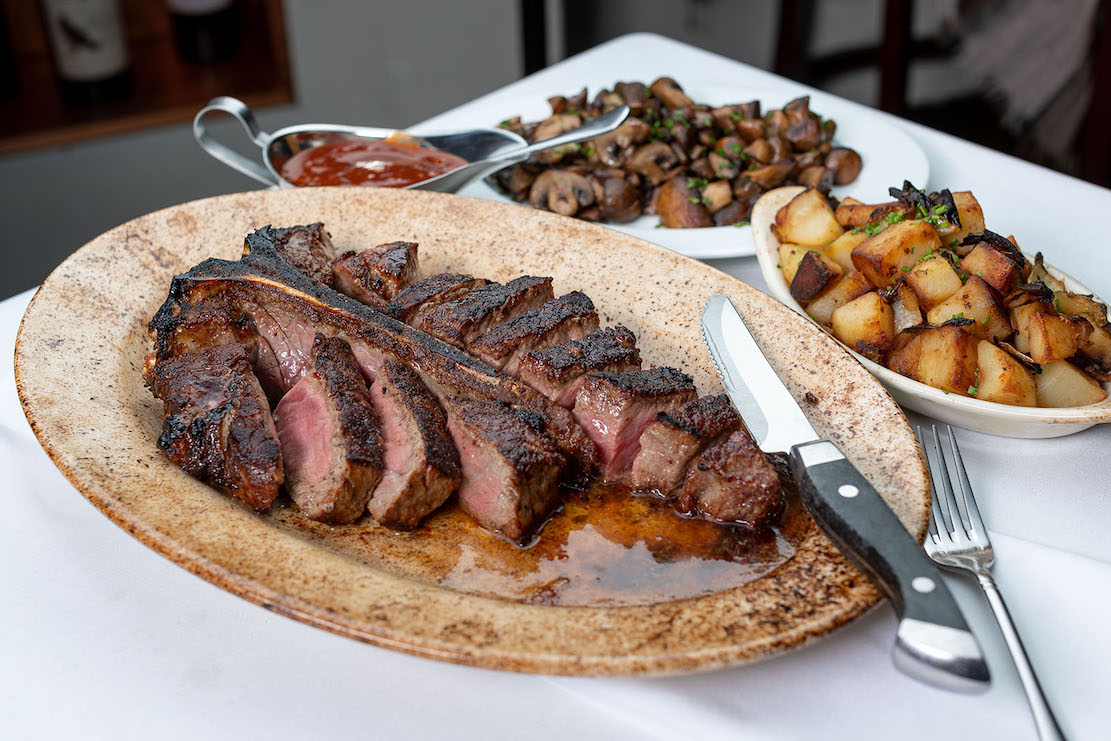 Otherwise
there is yellowfin tuna tartare ($27), a
very well-priced slab of smoky bacon ($9)
and an impeccable onion soup gratinée ($13).
Not every New York steakhouse does a whole
lobster but Royal 35’s is big and very meaty
(market price). With any dish you’ll want to
share a big portion of creamed spinach
($15), crispy German potatoes ($14) and
crisp, sweet onion rings ($11). Mac and
cheese with lobster ($32) could make a
decadent main course all on its own.
Otherwise
there is yellowfin tuna tartare ($27), a
very well-priced slab of smoky bacon ($9)
and an impeccable onion soup gratinée ($13).
Not every New York steakhouse does a whole
lobster but Royal 35’s is big and very meaty
(market price). With any dish you’ll want to
share a big portion of creamed spinach
($15), crispy German potatoes ($14) and
crisp, sweet onion rings ($11). Mac and
cheese with lobster ($32) could make a
decadent main course all on its own.
In the tradition of Peter Luger
(where scores of eastern Europeans got their
training in the business), a sliced
porterhouse (for two or more, $114-$165) is
the signature cut, and they do a terrific
job with exterior charring while keeping the
middle as you order it. There is also a New
York strip steak ($59), ribeye ($64), rack
of lamb ($53) and a succulent 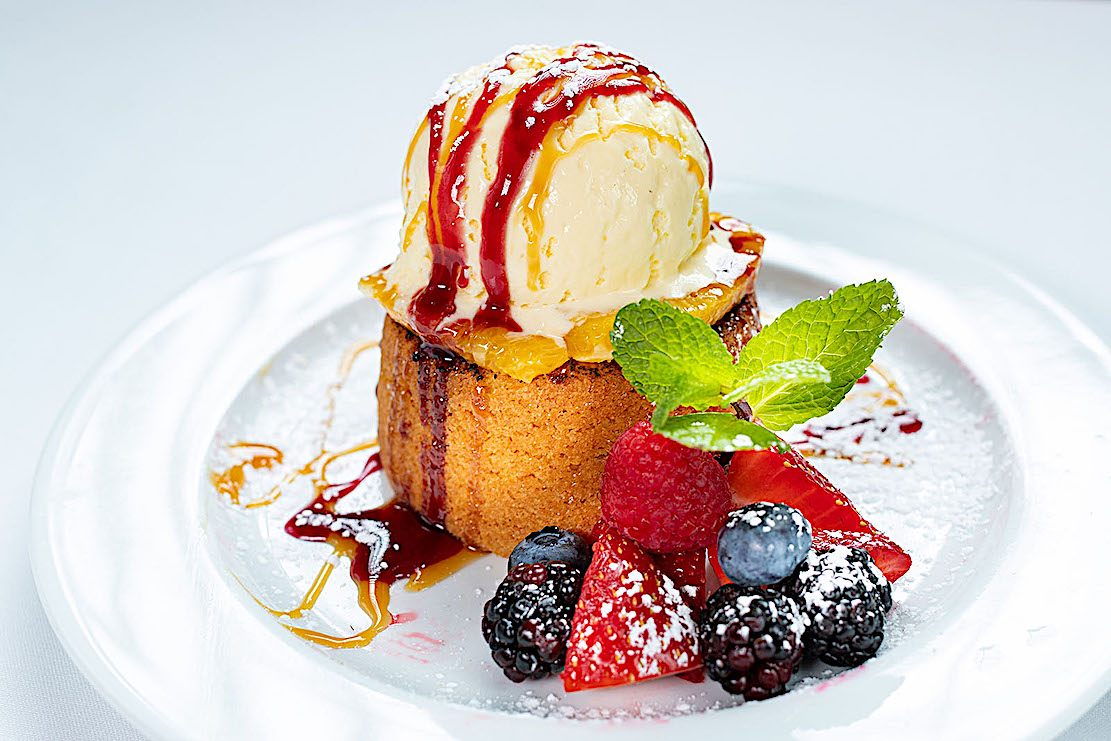 veal
chop ($58). All the beef is USDA Prime and,
as noted, dry-aged on the premises. All the
prices are very competitive simply because
every New York steakhouse knows what every
competitor charges and dares not get out of
line when there are so many options. (It
should be noted that Royal 35 is one of the
very few steakhouses in the city serving
lunch thus far. Of course, to maximize their
efforts, they are doing take-out, curbside
service and delivery.)
veal
chop ($58). All the beef is USDA Prime and,
as noted, dry-aged on the premises. All the
prices are very competitive simply because
every New York steakhouse knows what every
competitor charges and dares not get out of
line when there are so many options. (It
should be noted that Royal 35 is one of the
very few steakhouses in the city serving
lunch thus far. Of course, to maximize their
efforts, they are doing take-out, curbside
service and delivery.)
When outdoor seating was allowed,
guests responded quickly. “Last weekend we
did 100 covers in three seatings,” says
Alfred. “What’s so wonderful is that we’re
seeing a whole new, younger crowd come to
the restaurant.” Though indoor dining is
still slow, Alfred is not worried: “People
are still afraid to eat indoors, but when
the cold weather comes, 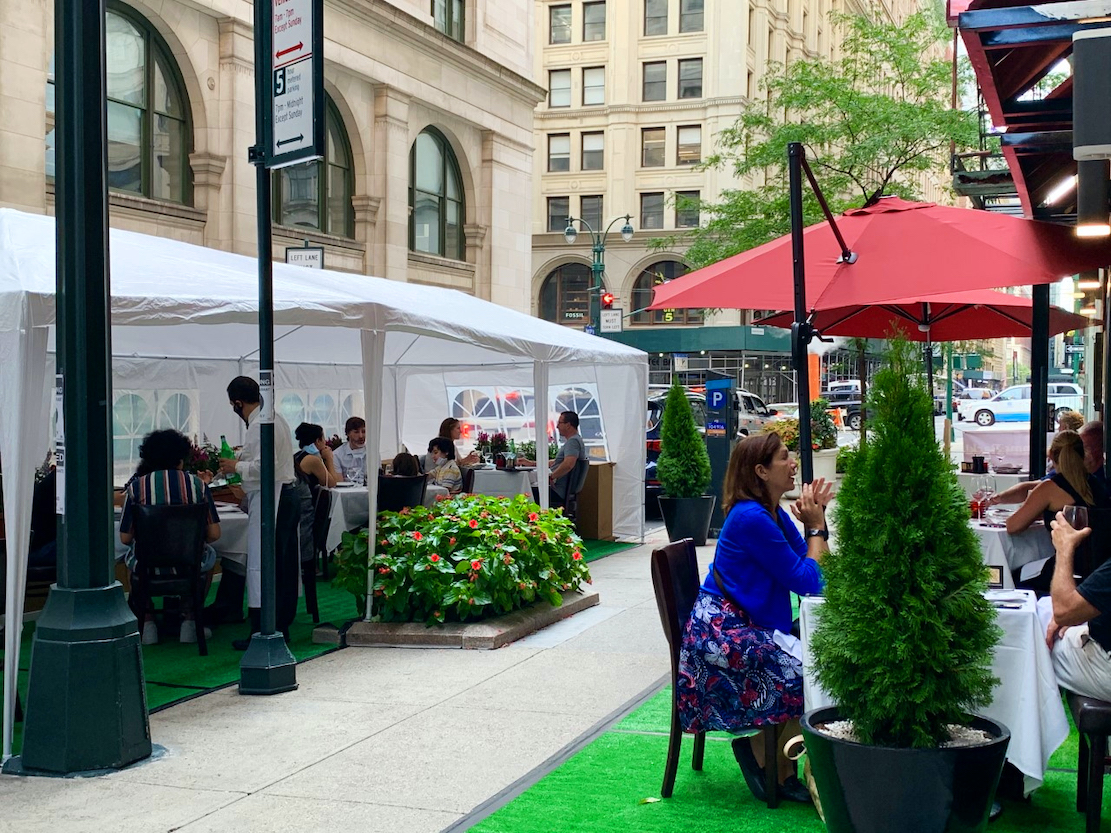 we will see them.”
(They are now watching what their
competitors are doing to ensure enclosed
outdoor dining for the winter.) “This is
still America and this is New York. People
will never be stopped from
enjoying
a good meal outside or inside.”
we will see them.”
(They are now watching what their
competitors are doing to ensure enclosed
outdoor dining for the winter.) “This is
still America and this is New York. People
will never be stopped from
enjoying
a good meal outside or inside.”
Steakhouses become
favorites very easily among New Yorkers, as
well as with out-of-towners, who now require
a mandatory quarantine to enter the city,
and much of their clients’ allegiance is to
the people who run them. Some are
out-of-town chains, like Ruth’s Chris,
Morton’s, CUT, Capital Grill and Del
Frisco’s, while others, though headquartered
in New York, also have the corporate chain
look and cast, like Palm and Strip House.
Royal 35, among a few other steakhouses run
by Albanian, Slovenian and Montenegro
immigrants, have their own individual
personalities, thanks to owners whose
commitment is not to a corporate bottom line
as much as it is a dedication to the
customers whom they are winning back,
indoors and outdoors, day by day, guest by
guest.
Open for
lunch and dinner daily.
❖❖❖
LOVE AND PIZZA
Since, for the time being, I am unable to write about or review New York City restaurants, I have decided instead to print a serialized version of my (unpublished) novel Love and Pizza, which takes place in New York and Italy and involves a young, beautiful Bronx woman named Nicola Santini from an Italian family impassioned about food. As the story goes on, Nicola, who is a student at Columbia University, struggles to maintain her roots while seeing a future that could lead her far from them—a future that involves a career and a love affair that would change her life forever. So, while New York’s restaurants remain closed, I will run a chapter of the Love and Pizza each week until the crisis is over. Afterwards I shall be offering the entire book digitally. I hope you like the idea and even more that you will love Nicola, her family and her friends. I’d love to know what you think. Contact me at loveandpizza123@gmail.com
—John Mariani
To read previous chapters go to archive (beginning with March 29, 2020, issue.
LOVE AND PIZZA
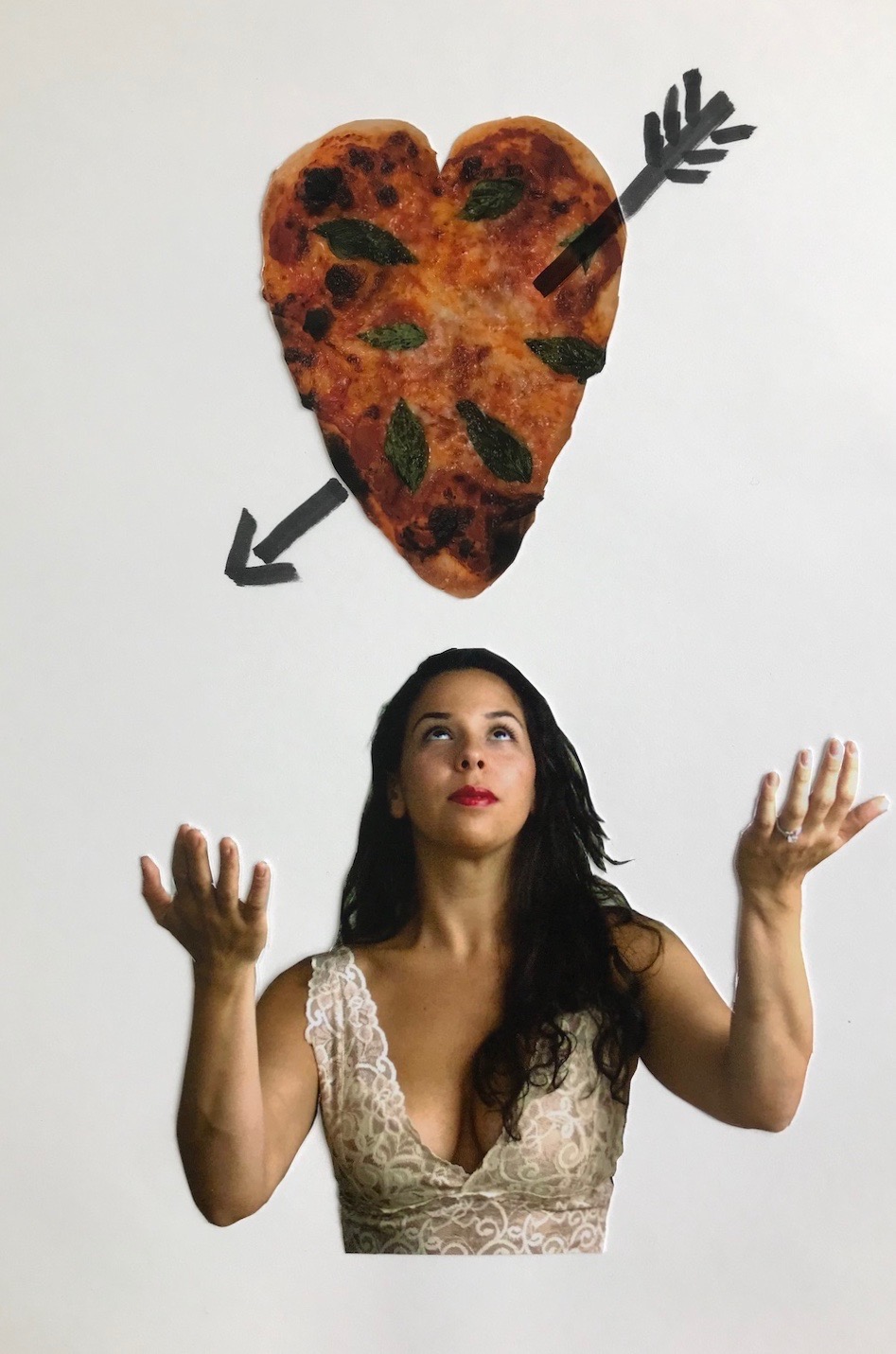
Cover Art By Galina Dargery

The photo shoots had finished late
Thursday afternoon, so Nicola was able to join
in the preparations for Easter Sunday, including
Holy Friday and Holy Saturday visitations to Our
Lady of Mount Carmel church with her family. Easter
Sunday blossomed with warm sun and the perfume
of lilies at church and at home. 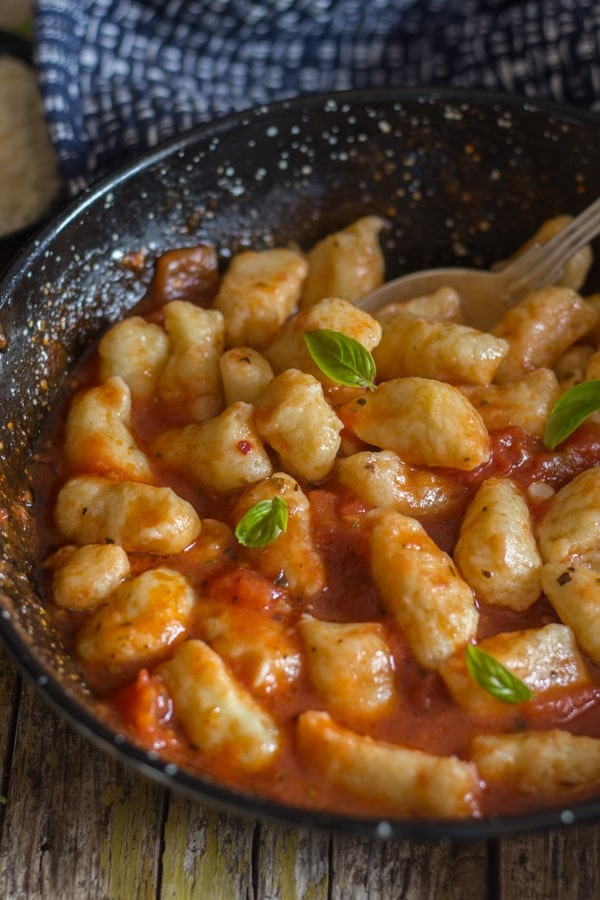 People
were coming over early for Easter dinner, so
everyone pitched in, and Nicola was extremely
happy to be making the gnocchi the way her
grandmother had shown her.
People
were coming over early for Easter dinner, so
everyone pitched in, and Nicola was extremely
happy to be making the gnocchi the way her
grandmother had shown her.
Nicola also cherished the chance to take
her grandfather to his wife’s grave at Saint
Raymond’s Cemetery not far from where they lived. There
they placed Easter lilies on the fresh grave and
Nicola helped her grandfather kneel down at the
gravestone, speaking to his wife in Italian as
Nicola wept, asking her grandmother to help guide
her in the months ahead.
For in two days Nicola would be back in
Milan, back to the dorm and the classrooms, which,
after three months had become something of a
drudge. The
events of the past week—the family reunion, with
the memory of Teresa still fresh, the photo shoots
for Willi
and the comforting traditions of Easter—had all
been special, in many ways unique, but in other
ways troubling.
It seemed to Nicola Santini that she now
straddled at least two worlds, one very old and
very cherished, and one ancient but new with
promise. Adding
in her whirlwind modeling experiences and her time
with Giancarlo had caused confusion in her
long-held plans, which had so recently seemed so
direct and dependable.
 She
was in contact with Elena on Monday, learning that
the photos came out even better than she’d
expected. “Nikki,” she said. “I pride myself on
getting you to do this shoot for me and the
magazine, and I think you have a future with Willi. So,
listen—and I say this because I’ve been around
long enough to recognize someone special coming
into the industry—you really are a special girl. And
nothing makes me happier than to know how
important your studies are to you. My God,
I’ve seen so many girls with just a high school
education go off the deep end in modeling, with
nothing to fall back on. But I
know a lot of other girls who pursued their
education while modeling. It took
them a little longer, but they got their degree. And
meanwhile they put away a lot of money and
traveled around the world and, grazie Dio,
they avoided the pitfalls of being sucked dry by
the sycophants, the parasites and people who wish
them bad luck, so that they can be replaced at the
snap of their fingers.
She
was in contact with Elena on Monday, learning that
the photos came out even better than she’d
expected. “Nikki,” she said. “I pride myself on
getting you to do this shoot for me and the
magazine, and I think you have a future with Willi. So,
listen—and I say this because I’ve been around
long enough to recognize someone special coming
into the industry—you really are a special girl. And
nothing makes me happier than to know how
important your studies are to you. My God,
I’ve seen so many girls with just a high school
education go off the deep end in modeling, with
nothing to fall back on. But I
know a lot of other girls who pursued their
education while modeling. It took
them a little longer, but they got their degree. And
meanwhile they put away a lot of money and
traveled around the world and, grazie Dio,
they avoided the pitfalls of being sucked dry by
the sycophants, the parasites and people who wish
them bad luck, so that they can be replaced at the
snap of their fingers.
“All I am suggesting is when you come back
to New York, you visit an agency and see what they
can offer, which I believe will be a lot. I know
what they're looking for right now. It’s
still the American girl, but she’s got to have
more of an edge than in the ‘70s. You look
a bit different, you’ve got a real personality,
and you're smart as a whip. You’re not a surfer
chick.”
Elena said a lot more and Nicola thanked
her for the vote of confidence, promising that
when she returned from Italy she would visit an
agency and see what happens. They blew kisses
through the phone and said goodbye.
The next day Nicola boarded her overnight
flight and, an hour into it fell into a deep
sleep, waking only on the announcement that the
plane had started its descent into Malpensa.
When she arrived at her dorm at 9 a.m.,
Catherine was still asleep but woke up when she
heard Nicola come in. “So, how’d it all go?” she
asked, stretching her arms.
“I have to say it really went very well. It
was actually a helluva lot of fun. And of
course it was great seeing my family. So, what’d you do?”
Catherine
yawned, fell back onto her pillow and said slowly,
“Well ... I met this cool guy.”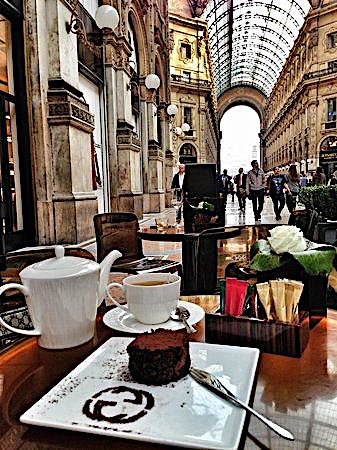
Nicola gasped. “Who? Where? Is he Italian?”
Catherine said, “I kinda wish he were. No, he’s
an American guy and our families have known each
other for ages, although I’d never met him
before.”
“What's his name?”
“Tom Skidmore.”
“Of the Skidmore architectural family?”
“Yep, that’s the one. He’s
over here studying architecture, and, against all
my better instincts, I really like the guy. He’s
crazy intelligent, has good manners and is damn
good-looking.”
“When do I meet him?”
“Well,” answered Catherine, “How about
rounding up your marchese and we’ll double date, I
don’t know, this weekend?”
Nicola lost a bit of her smile and said,
“To tell you the truth, I’m a little pissed. Not
worried, just pissed. He never called me before I
left.”
“I thought he didn't have your number?”
“He could certainly have gotten the dorm’s
number.”
“Well, come on, Nick, it's only been a
week.”
“That’s what I keep telling myself.”
“He’ll call, he’ll call. Now how about some
breakfast?”
The two friends went to their favorite café
nearby and filled each other in on the past week’s
details. Catherine
seemed quite happy, if not ecstatic, about her own
developments, as if she was charmed by, but a
little apprehensive, about the new man in her
life.
“You know, I think it’d be easier if we
just had a fling,” she said, “especially since I’m
going back in three weeks and he’s staying on
through next year.”
“Excuse my impertinence, Catherine, but I
know both of you have the resources to see each
other as often as you wish to.”
“Yeah, I know, but, much as I’ve adored the
last few months—getting away from my family and
everything—I also know I’m never going to move
over here. I
guess the old ties are stronger than I thought.”
Nicola said, “It’s kind
of ironic, Catherine, but I feel the same way,
only in reverse.”
“What do you mean?”
“Well, aside from the modeling—and I know
there’s nothing long term in that—I’ve been
feeling that I really do belong over here. There
was something about being home that was—” she
paused to find the right words—“it felt stifling. I’m
sounding like a snob, but even my family seemed so
dull and predictable
and my friends back there so complacent, incapable
of believing anyone would ever want to enjoy a
different life.”
“But didn’t you say a lot of the Italians
have moved out of the neighborhood?”
“Yes, but it’s the old saying, ‘You can
take the guy out of the Bronx but you’ll never
take the Bronx out of the guy.’”
“Well, la-dee-dah,
Nicky Santini,”
said Catherine, giggling. “Maybe you are a
snob. It
takes one to know one, y’know, and I was baptized
in the blood.”
 “But in all the time I’ve known you,
Catherine, you’ve seemed so out of step with that,
what shall I say, hoity-toity life back home.”
“But in all the time I’ve known you,
Catherine, you’ve seemed so out of step with that,
what shall I say, hoity-toity life back home.”
“Nick, I am and I’m not. In the
end, the same saying applies, `You can take the
girl off Park Avenue, but blah blah blah.”
“Well, then,” said Nicola, lifting her
cappuccino cup, “Here’s to us snobs. Cent’anni!”
With less than a month to go in Italy,
Nicola devoted her energies to class and preparing
for final exams.
As at Columbia, she had been a high
achiever in Milan, and she claimed that a lot of
her general knowledge about many subjects,
including history, religion and Latin came from
her parochial school education, even if viewed
through a Catholic kaleidoscope that both
distorted and colored the stories behind every
subject, except mathematics.
In fact, Nicola credited her Catholic
education for her knowing those mystical and
symbolic meanings of western art that other
students had to pick up in advanced courses. Catholicism
had also provided her with a wonder of the
spiritual as well as an awe for the agonies that
the Church’s saints and martyrs had gone through
for Christ. She
was terrified but thrilled by the exquisite
passion of Saint Catherine being pierced with an
arrow through her heart by an angel, and of Saint
Sebastian, turning his eyes rapturously to Heaven
as his earthly body was being shot through with
arrows. In great works of art, such suffering was
always shown as being beautiful and
transformative.
Nicola responded deeply to the tenderness
of Raphael’s many depictions of the Madonna and
her child, and
to the breathtaking sadness of Michelangelo’s
“Pietà” in Rome and the stark rigor mortis of
Mantegna’s “Lamentation over the Dead Christ.” She had
surrendered to these emotions through years of
attending Mass, holy day celebrations, and
receiving the sacraments, all of them with their
own radiant symbols and colors—purple for Lent,
rose for the third Sunday in Advent, red for
Palm Sunday and white for the most glorious events
like Easter, All Saints Day, the sacrament of
Matrimony and the Feast of Angels.
Most of this
was new textbook material for her non-Catholic
student colleagues.
For Nicola, it was knowledge that had been
passing through her whole being week after week
since she was a child, becoming so much an
essential part of her that it was embedded there
inextricably for the rest of her life. And now
in Milan, she was seeing how the great artists
worked those ancient, beloved symbols and colors
into their work in statues and on church walls
intended to teach the wonders of God to the
illiterate people praying beneath the paint and
marble. In
Milan, Nicola
could hardly turn a corner without seeing a saint
or a holy, haloed angel staring back at her.
GAME SEASON WINES
By John Mariani
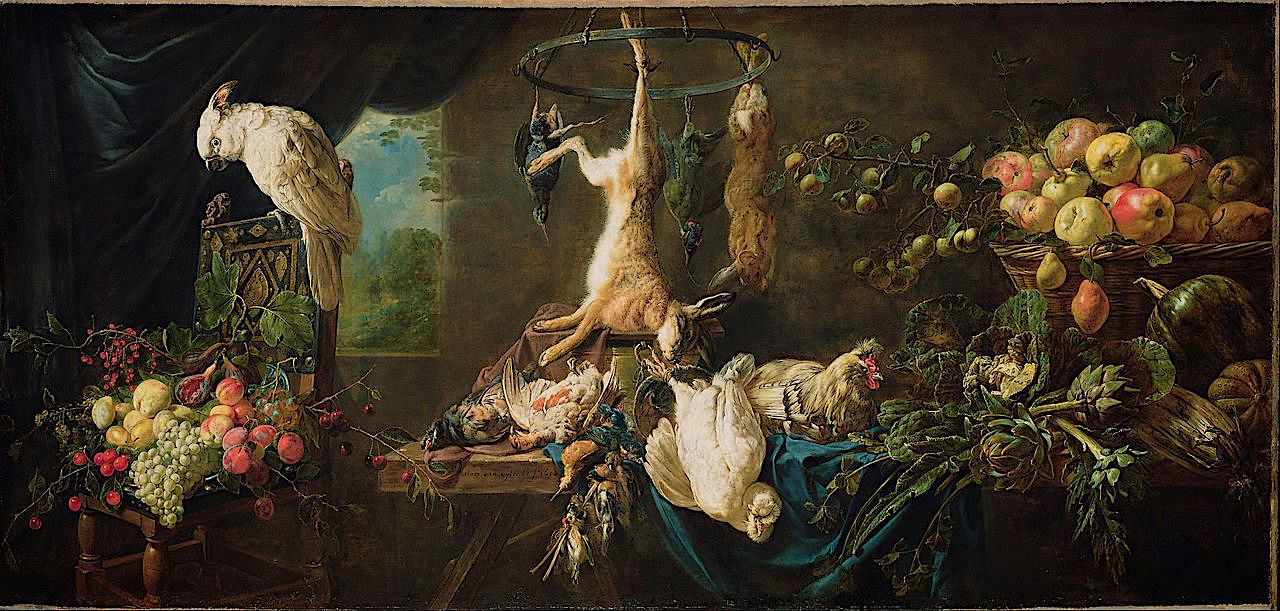
The
difference between a true hunter and a weekend
amateur is that the former only kills what he
wants to eat and the latter only eats what he
hasn’t hunted.
In the same way, the true wine lover is
one who matches the wine to the food, not the
other way around.
So, when it comes to serving game, the
choice of wine is as important as the sauce and
side dishes served with the food, and, although
there are no longer any hard-and-fast rules about
such things (white with fish, red with meat),
there are certain affinities between game and
wines that can make an enormous difference in the
outcome of a meal.
I have, therefore, chosen five varieties of
game and matched them to wines that bring out the
best in them and enhance everything about their
essential flavors.
And, I might add, vice-versa. Depending
on the sauce, of course, which might be very spicy
or Asian or sweet, as in a classic duck à
l’orange, I might alter my picks. But for
the average cook who’s going to serve game simply
so as to retain those flavors that make it
special, here are my most ardent suggestions.

Venison—The flavor of wild venison—with its
satiny, lean meat and deep red color—is among the
great pleasures of gastronomy, and nothing but a
fine red wine with some good fruit and tannin
components will do.
Even farm-raised venison, though lacking
the desirable gaminess of wild deer, needs a
robust red wine.
I find pinot noirs too delicate and
California cabernets too big. Instead
I love Tuscan wines, which can range from a
medium-bodied, juicy Chianti up to a very
expensive so-called
“Super Tuscan”
like Tignanello.
Somewhere in the middle are the IGT wines
“typical of their region,” like Gagliole’s
Pecchia 2015 ($190) made from 100%
Sangiovese only in the best vintages in the
Colli della Toscana Centrale. At this price,
it’s a good holiday gift wine.
Duck—Whether you serve sliced duck breast rare,
as is the French style, or the whole bird roasted
crisp, duck has a flavor finer than chicken’s dark
meat and the succulence that comes from the
enormous amount of fat the bird possesses in it
skin. The
red wines of Piedmont seem heaven-made for duck,
especially Barbarescos, and I love Martinenga’s
2014 vintage ($65) by the Marchesi di Gresy
for its brilliance, richness tempered with soft
tannins and an overall classic structure. No white
wine is as good as a good red wine with duck.
Pheasant—I don’t find much farm-raised pheasant
worth the money, but a freshly caught bird, even
if it doesn’t have much fat on it, makes for
wonderful eating.
The mild gaminess and the texture of the
flesh make it ideal for a lighter red wine. (You
will probably want to bard a wild bird with bacon,
which provides the fat and keeps the flesh from
drying out.)
You don’t
want a big Cabernet, which will overpower the
bird’s flavor.
Here a pinot noir is my prime choice, like
Bryn Mawr
Vineyards Estate Pinot Noir 2016 ($40) from
Oregon’s Willamette Valley, with
rocky soil and lower temperatures than those of
lower elevations. The label says “High Hill. High
Risk. High Rewards”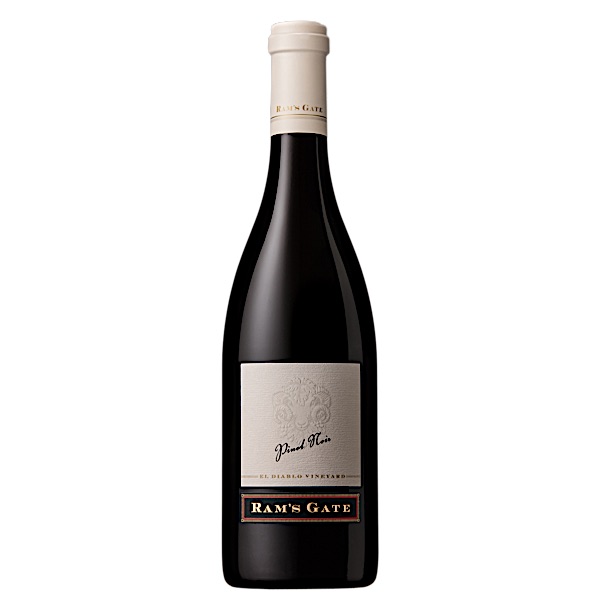 (Bryn Mawr means “high hill” in
Welsh). The
grapes have to struggle, and winemaker Rachel Rose
knows just how to bring out the best in them. I
also recommend Ram’s Gate
Pinot Noir 2017 ($58) at a pleasant 13.8%
alcohol, with 18 months in oak to round it all off
to go with the pheasant’s white meat.
(Bryn Mawr means “high hill” in
Welsh). The
grapes have to struggle, and winemaker Rachel Rose
knows just how to bring out the best in them. I
also recommend Ram’s Gate
Pinot Noir 2017 ($58) at a pleasant 13.8%
alcohol, with 18 months in oak to round it all off
to go with the pheasant’s white meat.
Trout—The
two classic ways to treat trout are either to
pan-fry it in butter or bacon fat or to cook it in
a court-bouillon, whose added vinegar turns the
skin a delightful blue color. In
either case trout takes well to white wines with
an edge and enough acid to enhance the marvelous
freshwater flavor of the fish. With its
apple-like fruitiness and its tangy finish,
riesling makes a great match. German
rieslings that are labeled “trocken,”
meaning dry, are delicious with trout. Nik Weis
makes two excellent rieslings in the Mosel region
at very good
prices: the Urban Riesling 2019 ($13.99)
and St. Urbans-Hof Wiltinger Kabinett 2018
($19.99).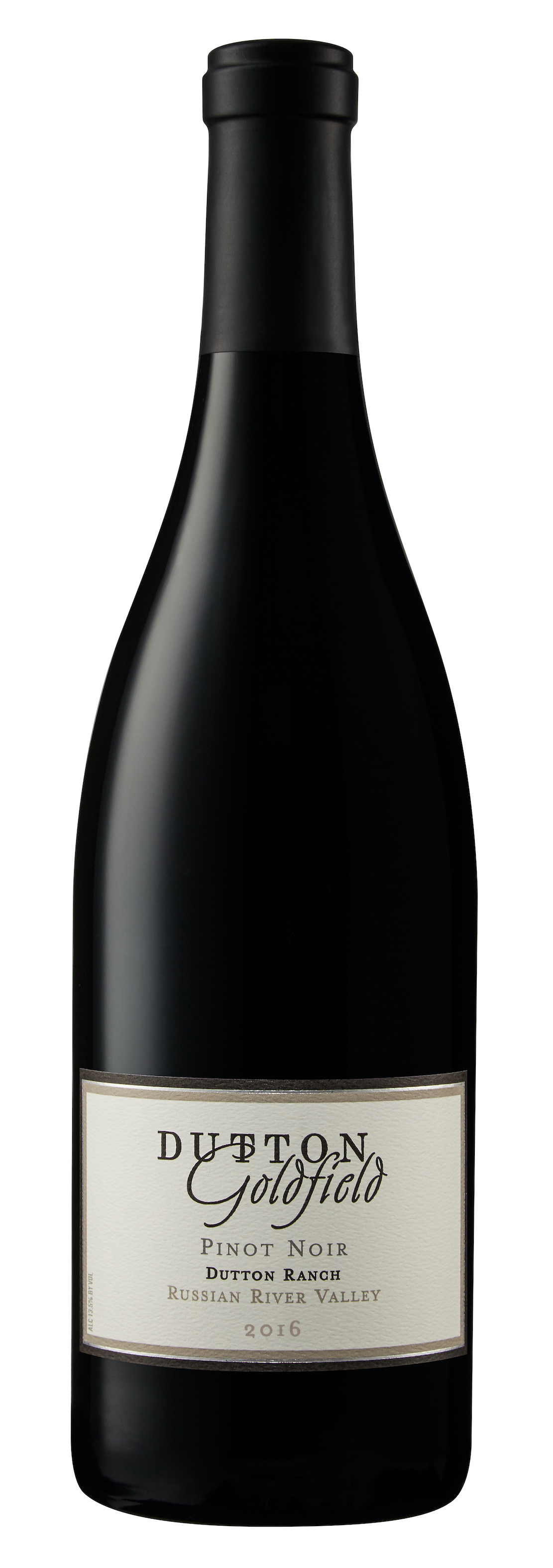 Founded right after the
World War II, Nik Weis toes a classic line and
avoids trendiness. Easy to drink, with good
intensity, they go with all seafood. Alsace makes
first-rate rieslings, a bit spicier, and at 12.5%
alcohol they can be had as a first wine of the
evening with an appetizer but go on from there
with the trout, even smoked trout. My pick is Gustave
Lorentz Réserve 2017 ($26), which even five
or more years old has vibrancy (I recently had a
ten-year-old bottle that was just beginning to
show oxidation), but the fresh fruit and acid of
current vintages go best with trout.
Founded right after the
World War II, Nik Weis toes a classic line and
avoids trendiness. Easy to drink, with good
intensity, they go with all seafood. Alsace makes
first-rate rieslings, a bit spicier, and at 12.5%
alcohol they can be had as a first wine of the
evening with an appetizer but go on from there
with the trout, even smoked trout. My pick is Gustave
Lorentz Réserve 2017 ($26), which even five
or more years old has vibrancy (I recently had a
ten-year-old bottle that was just beginning to
show oxidation), but the fresh fruit and acid of
current vintages go best with trout.
Striped bass—A great fish deserves a great white wine,
and striped bass, especially those taken from
waters off Cape Cod down to South Carolina, is one
of the finest of all fish for a feast. It can
be used for sushi, because its flesh has such
meaty firmness and enough fat to demand an equally
fat wine like chardonnay. France’s
Burgundy region produces the most delicate and
most expensive, but California makes the
biggest-bodied, with plenty of buttery, vanilla
flavors. If
allowed too much time in oak, however, the wine
tastes more like wood than fruit. A good
balance is achieved by Dutton
Goldfield’s Devil’s Gulch Vineyard 2018
($55), made in Marin County. They gave the grapes
a long hang time, but the alcohol is at a good
level of 13.8%. Also, while I don’t believe
Champagne goes with everything, Lauren-Perrier’s
Millésime Brut 2008 ($70) is a well-priced blend
of Chardonnay and Pinot Noir that would be
splendid with striped bass.
Sponsored by

Any of John Mariani's books below may be ordered from amazon.com.
 The Hound in Heaven
(21st Century Lion Books) is a novella, and
for anyone who loves dogs, Christmas, romance,
inspiration, even the supernatural, I hope you'll find
this to be a treasured favorite. The story
concerns how, after a New England teacher, his wife and
their two daughters adopt a stray puppy found in their
barn in northern Maine, their lives seem full of promise.
But when tragedy strikes, their wonderful dog Lazarus and
the spirit of Christmas are the only things that may bring
his master back from the edge of despair.
The Hound in Heaven
(21st Century Lion Books) is a novella, and
for anyone who loves dogs, Christmas, romance,
inspiration, even the supernatural, I hope you'll find
this to be a treasured favorite. The story
concerns how, after a New England teacher, his wife and
their two daughters adopt a stray puppy found in their
barn in northern Maine, their lives seem full of promise.
But when tragedy strikes, their wonderful dog Lazarus and
the spirit of Christmas are the only things that may bring
his master back from the edge of despair. WATCH THE VIDEO!
“What a huge surprise turn this story took! I was completely stunned! I truly enjoyed this book and its message.” – Actress Ali MacGraw
“He had me at Page One. The amount of heart, human insight, soul searching, and deft literary strength that John Mariani pours into this airtight novella is vertigo-inducing. Perhaps ‘wow’ would be the best comment.” – James Dalessandro, author of Bohemian Heart and 1906.
“John Mariani’s Hound in Heaven starts with a well-painted portrayal of an American family, along with the requisite dog. A surprise event flips the action of the novel and captures us for a voyage leading to a hopeful and heart-warming message. A page turning, one sitting read, it’s the perfect antidote for the winter and promotion of holiday celebration.” – Ann Pearlman, author of The Christmas Cookie Club and A Gift for my Sister.
“John Mariani’s concise, achingly beautiful novella pulls a literary rabbit out of a hat – a mash-up of the cosmic and the intimate, the tragic and the heart-warming – a Christmas tale for all ages, and all faiths. Read it to your children, read it to yourself… but read it. Early and often. Highly recommended.” – Jay Bonansinga, New York Times bestselling author of Pinkerton’s War, The Sinking of The Eastland, and The Walking Dead: The Road To Woodbury.
“Amazing things happen when you open your heart to an animal. The Hound in Heaven delivers a powerful story of healing that is forged in the spiritual relationship between a man and his best friend. The book brings a message of hope that can enrich our images of family, love, and loss.” – Dr. Barbara Royal, author of The Royal Treatment.
 |
The Encyclopedia of American Food and Drink by John F. Mariani (Bloomsbury USA, $35) Modesty forbids me to praise my own new book, but let me proudly say that it is an extensive revision of the 4th edition that appeared more than a decade ago, before locavores, molecular cuisine, modernist cuisine, the Food Network and so much more, now included. Word origins have been completely updated, as have per capita consumption and production stats. Most important, for the first time since publication in the 1980s, the book includes more than 100 biographies of Americans who have changed the way we cook, eat and drink -- from Fannie Farmer and Julia Child to Robert Mondavi and Thomas Keller. "This book is amazing! It has entries for everything from `abalone' to `zwieback,' plus more than 500 recipes for classic American dishes and drinks."--Devra First, The Boston Globe. "Much needed in any kitchen library."--Bon Appetit. |
"Eating Italian will never be the same after reading John Mariani's entertaining and savory gastronomical history of the cuisine of Italy and how it won over appetites worldwide. . . . This book is such a tasteful narrative that it will literally make you hungry for Italian food and arouse your appetite for gastronomical history."--Don Oldenburg, USA Today. "Italian
restaurants--some good, some glitzy--far
outnumber their French rivals. Many of
these establishments are zestfully described
in How Italian Food Conquered the World, an
entertaining and fact-filled chronicle by
food-and-wine correspondent John F.
Mariani."--Aram Bakshian Jr., Wall Street
Journal.
"Equal parts
history, sociology, gastronomy, and just
plain fun, How Italian Food Conquered the
World tells the captivating and delicious
story of the (let's face it) everybody's
favorite cuisine with clarity, verve and
more than one surprise."--Colman Andrews,
editorial director of The Daily
Meal.com. "A fantastic and fascinating
read, covering everything from the influence
of Venice's spice trade to the impact of
Italian immigrants in America and the
evolution of alta cucina. This book will
serve as a terrific resource to anyone
interested in the real story of Italian
food."--Mary Ann Esposito, host of PBS-TV's
Ciao
Italia. "John Mariani has written the
definitive history of how Italians won their
way into our hearts, minds, and
stomachs. It's a story of pleasure over
pomp and taste over technique."--Danny Meyer,
owner of NYC restaurants Union Square
Cafe, The Modern, and Maialino.
|
 |
 |
 |
 |
 |
 |
 |
 |
 Everett Potter's Travel Report:
Everett Potter's Travel Report: 
 Eating Las Vegas
JOHN CURTAS has been covering the Las Vegas
food and restaurant scene since 1995. He is
the co-author of EATING LAS VEGAS – The 50
Essential Restaurants (as well as
the author of the Eating Las Vegas web site: www.eatinglasvegas.
He can also be seen every Friday morning as
the “resident foodie” for Wake Up With the
Wagners on KSNV TV (NBC) Channel 3 in
Las Vegas.
Eating Las Vegas
JOHN CURTAS has been covering the Las Vegas
food and restaurant scene since 1995. He is
the co-author of EATING LAS VEGAS – The 50
Essential Restaurants (as well as
the author of the Eating Las Vegas web site: www.eatinglasvegas.
He can also be seen every Friday morning as
the “resident foodie” for Wake Up With the
Wagners on KSNV TV (NBC) Channel 3 in
Las Vegas.
MARIANI'S VIRTUAL GOURMET
NEWSLETTER is published weekly. Publisher: John Mariani. Editor: Walter Bagley. Contributing Writers: Christopher Mariani,
Robert Mariani, Misha Mariani, John A. Curtas, Gerry Dawes, Geoff Kalish,
and Brian Freedman. Contributing
Photographer: Galina Dargery. Technical
Advisor: Gerry
McLoughlin.
If you wish to subscribe to this
newsletter, please click here: http://www.johnmariani.com/subscribe/index.html
© copyright John Mariani 2020
